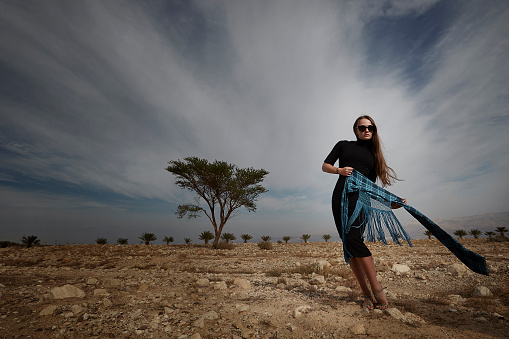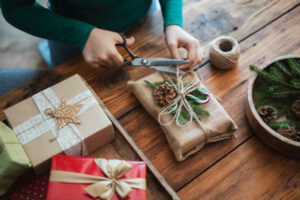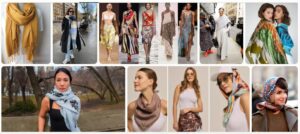When choosing a scarf, quality should always be the priority. A scarf is not just an accessory; it’s a statement of elegance, warmth, and personality. A poorly made scarf can fray, fade, or lose shape after just a few uses. On the other hand, a high-quality scarf remains vibrant, soft, and durable for years. Investing in a well-crafted piece is not an expense—it’s a long-term value addition to your wardrobe or boutique collection.
Table of Contents
Fabric Types: The Foundation of a Quality Scarf
The fabric of a scarf defines its feel, longevity, and appearance. Here’s what to look for:
1. Cashmere and Pashmina
These are among the most luxurious materials for scarves. Pashmina wool, sourced from the Himalayan mountain goat, is known for its exceptional softness, warmth, and lightweight texture. High-quality pashmina scarves are handwoven and feel delicate to the touch while offering supreme warmth.
2. Silk
Silk scarves exude luxury and elegance. The natural sheen, smooth texture, and vibrant color absorption make silk a favorite for formal occasions. Look for 100% mulberry silk for the best quality.
3. Wool and Merino Wool
Perfect for colder climates, wool scarves provide insulation and durability. Merino wool, in particular, is softer than regular wool and has natural moisture-wicking properties.
4. Cotton
Cotton scarves are breathable, lightweight, and ideal for casual or summer wear. Quality cotton scarves are made from long-staple fibers, giving them a smoother finish and better longevity.
5. Blended Fabrics
Blends of cotton, wool, or polyester can create scarves with desirable properties like wrinkle resistance, durability, and stretch. However, ensure the blend is proportioned to maintain comfort and quality.
Weaving Techniques That Signify Quality
1. Handwoven Scarves
Handwoven scarves are masterpieces. They have unique imperfections that add character and demonstrate true craftsmanship. A handwoven pashmina or jacquard scarf stands out from mass-produced alternatives.
2. Jacquard Weaving
This intricate method involves woven patterns, not printed ones. The designs are embedded into the fabric, which means they last longer and look more refined.
3. Yarn-Dyed Fabrics
In this technique, yarns are dyed before weaving, resulting in richer colors and patterns that don’t fade easily. Yarn-dyed scarves hold their hue even after multiple washes.
Print and Design Details to Evaluate
1. Precision Printing
High-end scarves feature digital or screen printing with high precision. The color application is even, sharp, and free of blurriness.
2. Embroidery Work
Embroidery adds dimension and luxury. Look for hand-embroidered scarves with fine threads and consistent patterns. Machine embroidery should be even, with no loose threads or mismatched areas.
3. Border Finishing
Quality scarves have clean, neatly finished edges. Look for rolled hems in silk scarves and tassel or fringe finishes in wool or pashmina varieties.
Colorfastness and Dye Quality
Quality scarves do not bleed color or fade with time. Test by gently rubbing the scarf with a damp white cloth—any color transfer indicates poor dye quality. Look for azo-free dyes which are environmentally friendly and safe for the skin.
Touch and Drape: How a Scarf Feels Matters
A premium scarf should feel soft, supple, and luxurious against the skin. It should drape well without stiffness or losing shape. When held in hand, it should fall with a natural, fluid motion. Scarves that feel scratchy or stiff are generally of lower quality or made from synthetic materials.
Durability and Maintenance
High-quality scarves are designed to last. They should:
- Hold their shape after multiple wears and washes
- Resist pilling and fraying
- Be easy to store without wrinkling
Always check the care label. Premium scarves usually require dry cleaning or gentle hand washing, which speaks to their delicacy and superior material.
Brand Reputation and Craftsmanship
Choose scarves from reputable manufacturers known for consistent quality and ethical production practices. Brands that offer certifications (such as Woolmark for wool) or detail their production process often maintain higher quality standards.
Versatility and Use Cases
A high-end scarf is more than just winterwear. It’s a versatile accessory that can be styled:
- Around the neck for warmth and style
- As a headscarf or turban
- Draped over shoulders like a shawl
- Tied to handbags for a pop of color
Investing in a quality scarf means investing in a piece that can complement various outfits and occasions.
Sustainability and Ethical Sourcing
Today’s conscious buyers care about how their garments are made. Opt for scarves that are:
- Made from natural fibers
- Produced using eco-friendly dyes
- Manufactured under ethical labor practices
Sustainable scarves not only benefit the environment but also ensure long-term skin safety and comfort.
Wholesale Scarves for Boutique and Business Buyers
If you’re a retailer or business looking to stock scarves, it’s critical to choose a wholesale scarf supplier that provides:
- Diverse designs (printed, yarn-dyed, jacquard, embroidered)
- Seasonal collections
- Customization options for brand labeling
- Fast global shipping and bulk order discounts
Conclusion: Make the Right Investment
A scarf may seem like a simple accessory, but a quality piece brings longevity, elegance, and unmatched comfort. When you know what to look for—fabric, weaving, print quality, and ethical sourcing—you’re equipped to make a smart, stylish investment.
We at Woolgold, leading manufacturer of scarves, deliver worldwide in US, UK, AU, UAE, Germany, Spain, and France. As a wholesale scarves supplier, we offer all kinds of scarves—pashmina, printed, yarn-dyed, jacquard, embroidered scarves, and more, each crafted to perfection.




